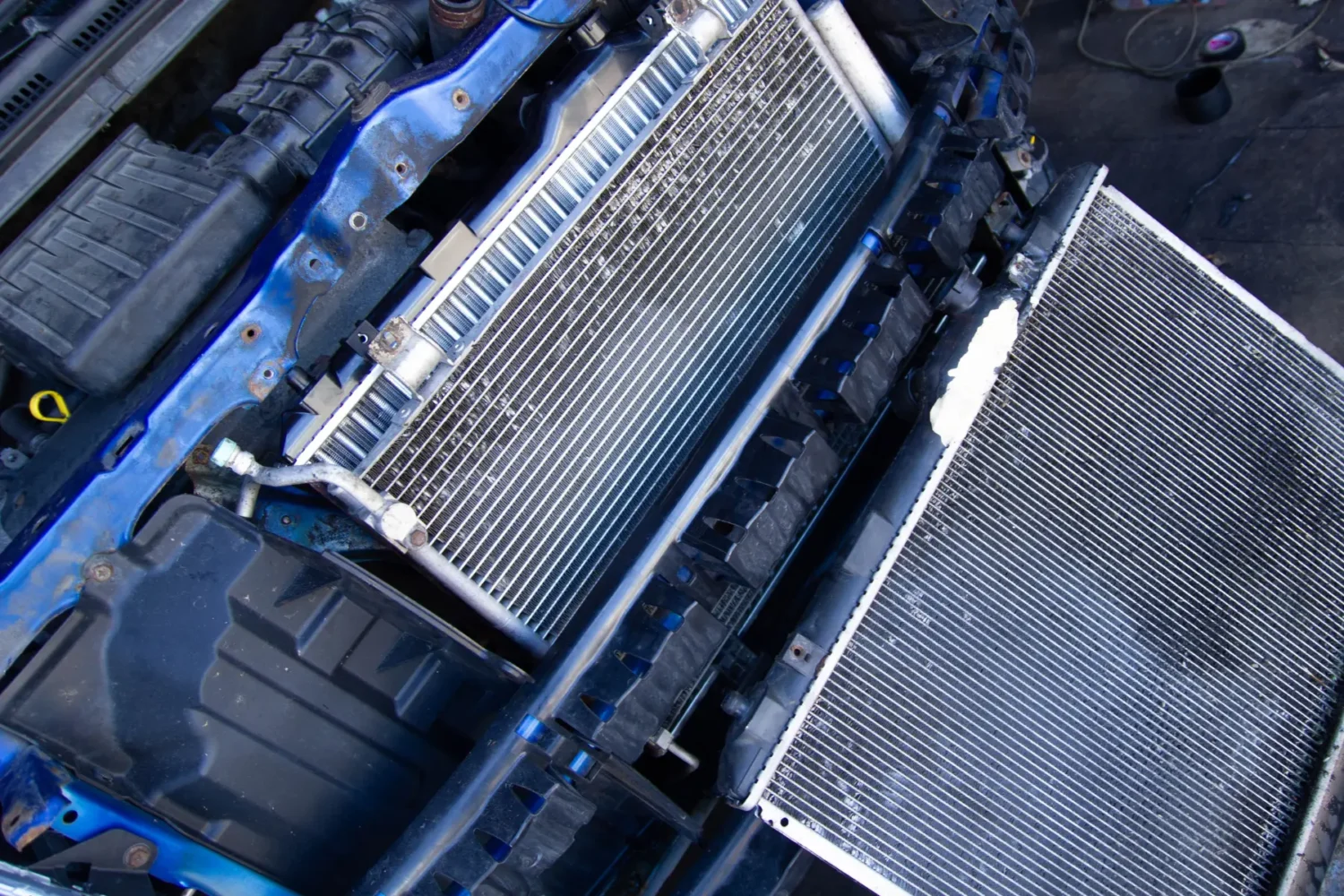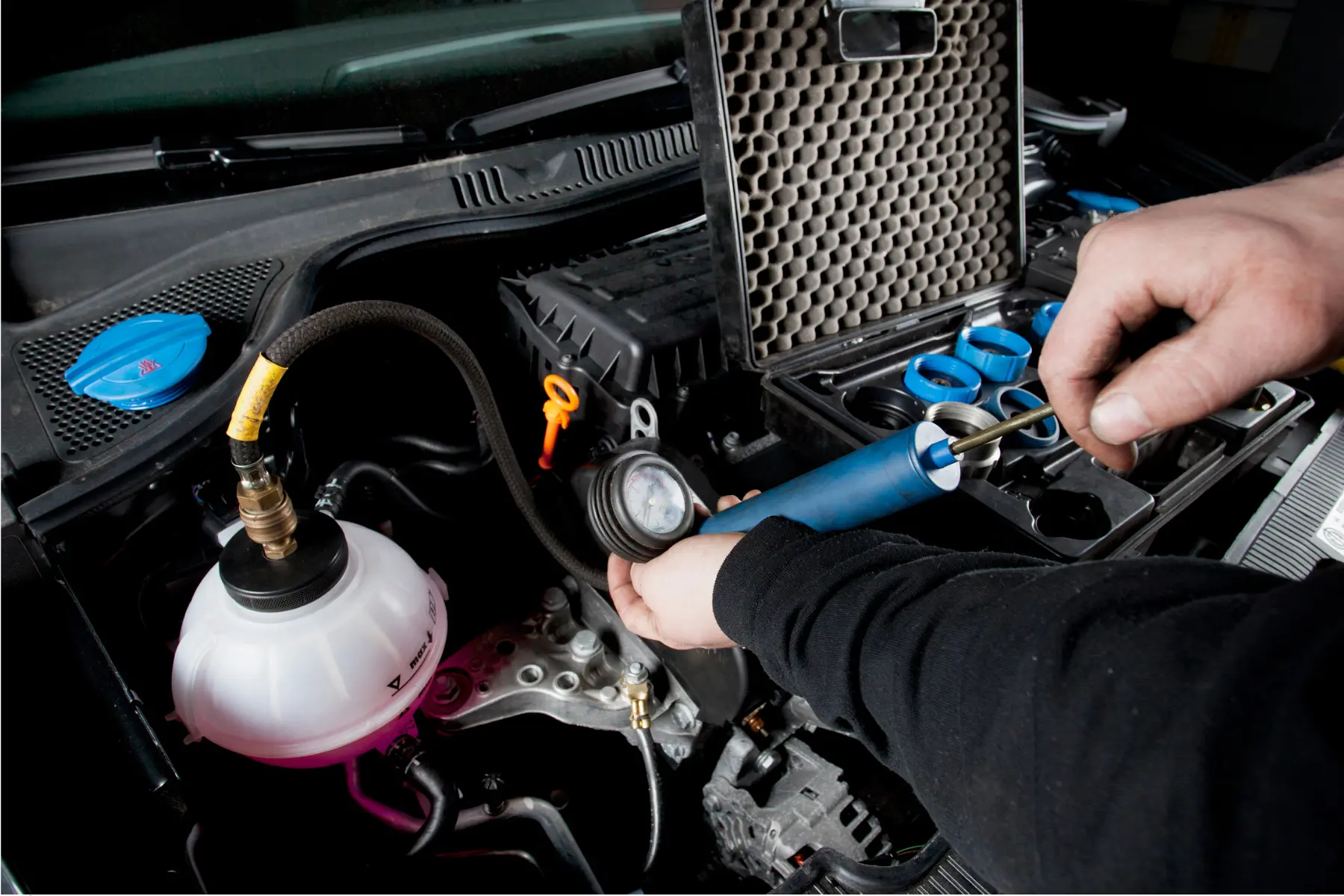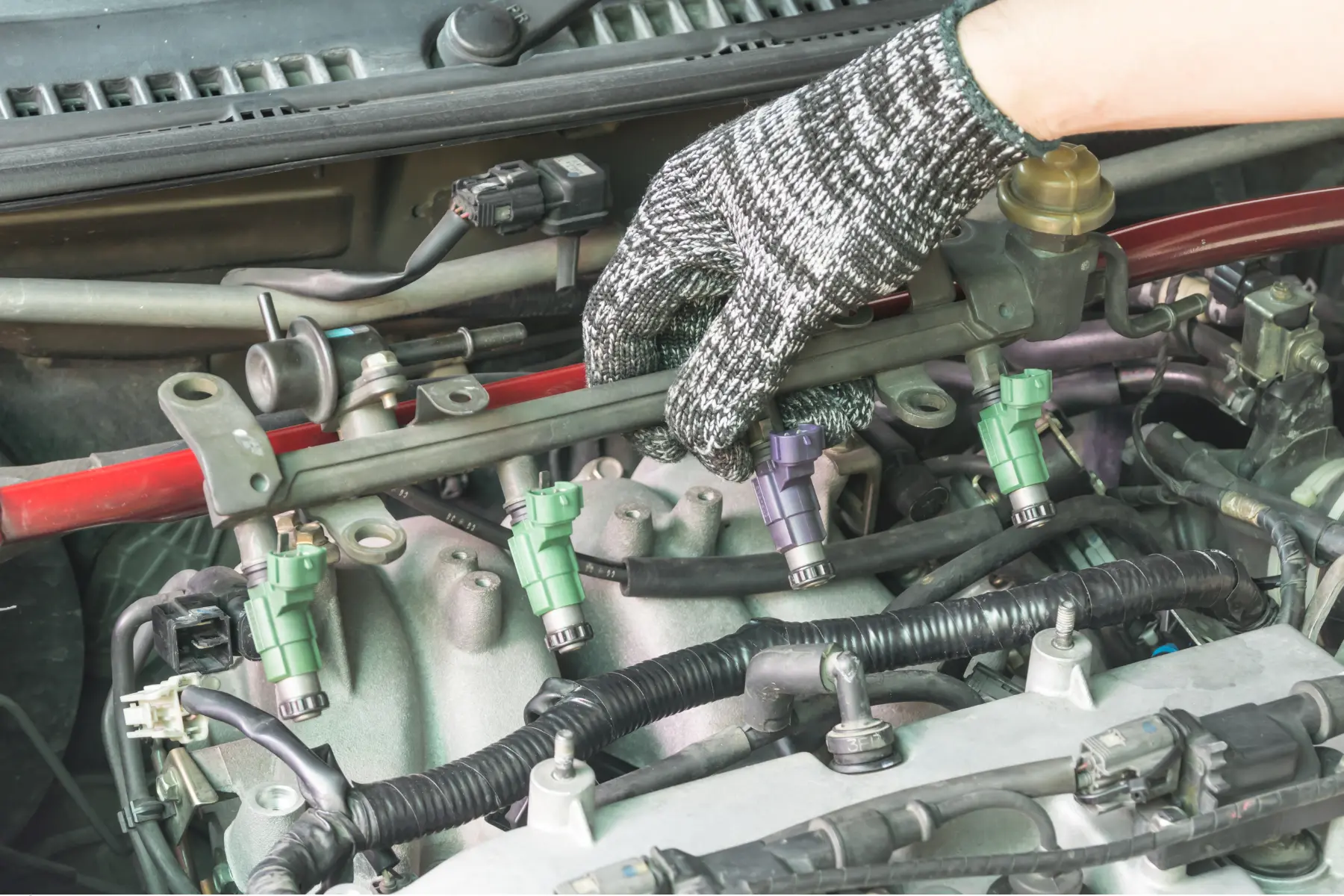Maintaining your car’s cooling system is crucial for ensuring the vehicle runs smoothly and efficiently. A well-maintained system prevents the engine from overheating, which is vital for avoiding costly repairs and extending the lifespan of your vehicle. Overheating can cause significant engine damage, including warped components and engine failure. By keeping the cooling system in good condition, you also ensure optimal performance and fuel efficiency, making regular maintenance not just a preventative measure, but a cost-effective one as well.

Key Components of a Car Cooling System
The Radiator
The radiator is essential in dissipating heat from the coolant that circulates through the engine. It consists of a series of tubes and fins that allow air to pass through, cooling the hot coolant before it recycles back to the engine. Effective car radiator maintenance is vital; a clogged or faulty radiator can lead to significant engine damage due to overheating. Regular inspections can prevent such issues, making sure that the radiator performs its heat exchange duties efficiently.
Water Pump
It functions as the heart of the cooling system, pumping coolant throughout the engine and back to the radiator for cooling. Proper water pump maintenance tips include checking for leaks and noises that could indicate a malfunction. Since the water pump is crucial for maintaining an even engine temperature, any sign of trouble should be addressed immediately to prevent engine damage.
Thermostat
A thermostat in the cooling system serves as a regulator, controlling the flow of coolant based on the engine temperature. It ensures the engine heats up quickly and maintains a consistent operating temperature. Checking and replacing the thermostat can be a simple yet effective measure in maintaining the efficiency of the cooling system, as a faulty thermostat can cause the engine to overheat or run too cold, which can be just as harmful.
Cooling Fan
Lastly, the cooling fan helps regulate the temperature of the coolant within the radiator, especially when the vehicle is stationary or moving slowly. Signs of cooling system issues often include the fan running excessively or not at all, indicating potential problems. Regular checks ensure that the fan is functioning correctly, aiding in proper airflow through the radiator and preventing engine overheating.
Essential Cooling System Maintenance Tips
Monitoring and Maintaining Coolant Levels
Regular monitoring of coolant levels is crucial for maintaining engine health. Low coolant levels can lead to overheating, which can cause severe damage to the engine. It is important to check the coolant reservoir periodically and top it up if necessary. Always ensure that the coolant is at the correct level and that you use the best coolant for car engines to achieve optimal performance and protection.
Identifying and Repairing Coolant Leaks
One of the common cooling system problems in cars is coolant leaks. These leaks can occur from various components such as the radiator, hoses, or the water pump. Identifying a leak early can be as simple as noticing a puddle under the car or a drop in coolant levels. Once detected, it is imperative to repair these leaks promptly to prevent further damage to the cooling system and engine.
Checking and Replacing the Thermostat
A malfunctioning thermostat can lead to significant issues. Below is a guide on checking and replacing a thermostat to keep your engine in peak condition:
- Locate the Thermostat: Start by consulting the vehicle’s manual to pinpoint the thermostat’s exact location. Typically, it’s found near the engine’s top radiator hose connection. Knowing its precise position helps streamline the replacement process and ensures you access the correct component without unnecessary disassembly. Always be cautious while locating the thermostat, as the area can become extremely hot.
- Inspect the Thermostat: Once located, check for any signs of visible malfunction. A thermostat that stays open continuously will lead to an engine running cold, impacting fuel efficiency and performance. On the other hand, one that remains closed can cause overheating, leading to potential engine damage. Inspect for wear or damage on the thermostat housing and look out for signs like rust, corrosion, or physical deformities.
- Test the Thermostat: To confirm if the thermostat is working correctly, perform a boiling water test. Remove the thermostat and place it in a pot of boiling water, observing its movement. A functioning thermostat should open fully as the water reaches the boiling point. If it remains closed or only partially opens, it indicates that the thermostat needs replacement to ensure reliable engine temperature control.
- Remove the Old Thermostat: With the inspection complete, prepare to remove the old thermostat by unscrewing the housing bolts. Carefully detach the housing cover and take out the thermostat. Be mindful of any coolant that might spill during this step. Once removed, clean the mounting surface to remove old gasket material or corrosion, ensuring a smooth surface for the new installation.
- Install the New Thermostat: Position the new thermostat in the correct orientation, usually indicated by an arrow or label pointing towards the engine. Secure it within the housing and reattach any removed bolts or covers. Ensure a tight fit without overtightening, as excessive force could damage the new thermostat or housing, potentially causing future leaks.
- Refill Coolant: After replacing the thermostat, refill the cooling system with the correct coolant mixture. Use the recommended type specified by the vehicle’s manufacturer, as different engines require specific formulations for optimal performance. Check the coolant level after allowing the engine to run briefly, topping off if necessary to maintain a safe operating temperature.
By taking these steps, you can keep your engine in good condition and avoid unnecessary breakdowns, saving on costly repairs in the long run. Proper coolant system check-up is an investment in vehicle health and reliable performance, especially during extreme temperatures.
Inspecting Belts and Hoses for Wear
The belts and hoses of the cooling system are susceptible to wear and tear due to constant exposure to heat, pressure, and chemical contaminants. Regular inspection for cracks, leaks, and loose connections is necessary to avoid sudden failures. Replace worn belts and hoses to maintain proper coolant circulation and pressure in the system.
Coolant Types and Selection Guide
Ethylene Glycol and Extended-Life Coolants
Ethylene glycol-based coolants have long been the standard in automotive engine cooling systems, prized for their ability to maintain stability under extreme temperature conditions, both in freezing and high-heat environments. This type of coolant is typically mixed with water to lower its freezing point and raise its boiling point, creating a reliable solution that protects the engine throughout various seasonal changes. Ethylene glycol also contains inhibitors that protect the internal components of the engine and cooling system from corrosion. However, one downside is that ethylene glycol coolant gradually breaks down over time due to chemical reactions occurring in the engine’s high-temperature environment, which means it requires periodic monitoring and replacement. Typically, vehicles using ethylene glycol coolants need a coolant flush every two years or 30,000 miles to ensure the fluid retains its protective qualities. Although effective, the maintenance demands of ethylene glycol-based coolants have paved the way for alternative formulations aimed at extending service intervals.
Extended-life coolants, often marked by the inclusion of organic acid technology (OAT) or hybrid organic acid technology (HOAT), offer a significant advancement over traditional ethylene glycol coolants. By incorporating organic corrosion inhibitors, extended-life coolants maintain their protective qualities much longer, often up to five years or 150,000 miles, depending on the vehicle and manufacturer’s recommendations. This extended lifespan is achieved by reducing the reliance on traditional inhibitors, which break down relatively quickly, and instead utilizing additives that slow chemical degradation and corrosion within the cooling system. These organic acids actively inhibit corrosion in the engine’s metal components and radiator, meaning that parts like the water pump, cylinder head, and radiator tubes are safeguarded over extended periods without needing as frequent replacement of the coolant. The advantages of extended-life coolants are particularly appealing to heavy-duty vehicles and fleets.
The Right Coolant for Your Engine Type
Selecting the appropriate car coolant types involves considering your vehicle’s manufacturer recommendations and engine type. Different engines may require different coolant formulations to protect against corrosion and scale buildup effectively. Always refer to your owner’s manual to determine the specific type of coolant recommended for your engine to ensure compatibility and optimal performance.

Seasonal and Climate Considerations
The effectiveness of your vehicle’s cooling system also depends significantly on the type of coolant used, especially concerning the climate and season. Here is a detailed guide on how to choose the right coolant based on these factors:
- Winter Conditions: When temperatures drop significantly, a coolant with strong antifreeze properties is essential. During winter, the coolant’s primary job is to prevent the engine and radiator from freezing. This can be achieved by using a coolant mixture with a higher glycol content, typically a 50/50 glycol-to-water ratio, which offers protection down to temperatures well below freezing. Glycol-based coolants not only lower the freezing point but also help maintain optimal viscosity, preventing any internal damage caused by expanding ice within the engine. For regions with harsher winters, some drivers may opt for an even higher glycol content, such as 60/40, to provide added security against freezing temperatures.
- Summer Conditions: In the heat of summer, a coolant that can withstand high temperatures is crucial to prevent engine overheating. Heat affects coolant by potentially raising its temperature past its boiling point, leading to evaporation, which may result in engine damage or failure. Choosing a coolant with advanced boiling-point elevation properties, often achieved by additives, is essential. Additives in these coolants work to raise the boiling point, preventing the coolant from evaporating prematurely. As a result, they help maintain engine temperature stability even in scorching conditions.
- Tropical Climates: In regions with consistently high temperatures and humidity, the demands on a vehicle’s cooling system are constant. Here, a coolant with a high boiling point is necessary to prevent the engine from overheating. Additionally, tropical climates often bring an increased risk of corrosion due to humidity, making it essential to select a coolant that contains corrosion inhibitors. These inhibitors prevent the oxidation of metal parts, protecting the radiator and engine components from damage. Including flushing the system to remove any potential build-up of debris, can further enhance the efficiency of coolants in tropical climates.
- Mountainous or High-altitude Areas: At high altitudes, reduced atmospheric pressure can cause coolant to reach its boiling point faster. To counter this, a higher concentration of coolant, such as a 60/40 ratio of glycol to water, can be more effective. This mixture raises the boiling point, allowing the coolant to function effectively even when atmospheric pressure drops. Additionally, vehicles used in mountainous areas are often subject to varying temperature extremes, so it’s important to select a coolant that can handle both high and low temperatures. Specialized coolants for high altitudes also contain additives that help maintain consistent cooling performance in thin air, minimizing the risk of overheating on steep climbs or during prolonged use at altitude.
- Mixed Driving Conditions: For drivers who frequently switch between climates, an all-season coolant provides the best balance of protection. All-season coolants are formulated to handle both freezing and overheating scenarios, making them ideal for diverse driving conditions. This type of coolant typically has a balanced mix of additives that lower the freezing point and raise the boiling point, ensuring reliable performance in various temperatures. Using an all-season coolant minimizes the need for frequent coolant changes, making it more convenient for those who travel between cold, hot, and temperate climates. Additionally, these coolants often contain anti-corrosion agents to safeguard the engine’s components regardless of weather changes.
By aligning your choice with specific seasonal or climate needs, you can avoid potential engine issues and prolong the life of your cooling system, contributing to a safer and more reliable driving experience. As always, regular maintenance and coolant checks tailored to your climate can further enhance the performance and lifespan of your vehicle’s cooling system.
Radiator and Coolant System Maintenance Procedures
How to Perform a Radiator Flush
How to flush a car radiator involves draining the old coolant, cleaning the system with a flush solution, and refilling it with fresh coolant. This process helps maintain the cooling system’s integrity and ensures that the radiator operates effectively, preventing engine overheating and potential engine damage.
Bleeding Air from the Cooling System
Air pockets in the cooling system can impair the circulation of coolant, leading to hot spots that can cause the engine to overheat. How to bleed air from a car’s cooling system typically involves opening the bleed valve and running the engine to normal operating temperature. It allows the air to escape as the coolant circulates, ensuring that the system is fully effective in managing the engine’s temperature.
Radiator Maintenance
This is vital to identify potential issues like leaks or blockages before they lead to more significant problems. During radiator maintenance, check for any signs of corrosion or debris and clean the external fins of the radiator with a brush or hose to ensure optimal airflow. Ensuring the radiator is free from obstructions will help maintain its efficiency in heat dissipation.
Common Signs of Engine Overheating
Low Coolant Levels
Symptoms of low coolant levels often manifest as an overheating engine, which can quickly lead to more serious problems if not addressed. Other symptoms include inconsistent cabin heater performance and a noticeable drop in coolant reservoir levels.
Failing Water Pump
The water pump function in a cooling system can exhibit several warning signs that are crucial to notice for timely intervention. These signs include coolant leaks at the front center of your car, a whining noise from the water pump area, and overheating of the engine. The water pump is essential for circulating coolant, and any failure in this component can lead to significant engine damage due to overheating.

Effective cooling system maintenance is crucial for the health and longevity of your vehicle’s engine. Consistent care helps avoid costly repairs and extends the life of your car. Emphasizing car cooling system maintenance can result in more reliable performance and enhanced vehicle safety, keeping your engine running smoothly under various conditions.




